When you think about Antarctica, what comes to mind? A cold, vast continent covered in ice? Eternal days of sunlight during the summer and endless dark nights of winter?
And what about the animals that call Antarctica home? Your first thoughts are probably seals and penguins, right?
In both cases, you would be partially right and partially wrong. While Antarctica does have long days of daylight and nighttime at the extreme ends of the calendar, and most of the continent is covered in ice year-round, there’s actually quite a bit of diversity in the continent’s climate. Did you know, for example, that parts of Antarctica are some of the highest, or windiest, or driest places on earth?
And when it comes to animals, the common ones you thought about don’t actually live in Antarctica but are rather temporary visitors. While there are a few large, common creatures that live there full-time, like the Emperor Penguin, the majority of the true, full-time inhabitants of the frozen continent are much smaller than you think. (Hint: you better bring your microscope!)
Let’s explore some of the amazing animals, both big and small, that call Antarctica home.
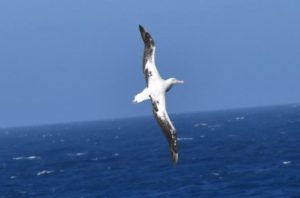
Albatross
The Wandering Albatross has the largest wingspan of any modern bird, which allows them to stay in the air for hours at a time. They love to fly way out into the deep ocean waters around Antarctica to feed on cephalopods, crustaceans, and small fish. Sometimes they eat too much and have to float on the water until they digest their food and are able to fly again!
Emperor Penguin

Emperor Penguins are the tallest and heaviest of all penguin species. Like all penguins, they aren’t able to fly. They have wings flattened into flippers that are ideal for swimming. Their diet consists mainly of fish, but also includes krill and squid. Typical life spans are twenty years, but some have been known to live to fifty years old!
King Penguin

As the second largest species of penguin, they are smaller, but somewhat similar in appearance to the Emperor Penguin. They eat mainly lantern fish, squid, and krill. Predators of the King Penguin include skuas, leopard seals, and orcas.
Hoff Crab
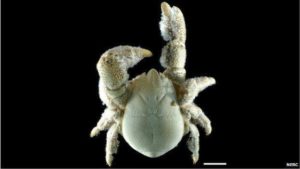
A species of deep-sea lobster, the Hoff Crab lives on hydrothermal vents near Antarctica. These vents emit fluids at temperatures greater than 660 degrees Fahrenheit – wow, that is hot! This creature has adapted to the crushing pressure and extreme darkness of its environment. And yes, it’s named after the famous actor of Baywatch, David Hasselhoff!
Leopard Seal

This is the second largest species of seal in the Antarctic. The adult male can weigh up to 780 pounds, and the only natural predator it has is the orca. It’s an opportunistic eater, feeding on a wide range of prey, including krill, birds, fish, and penguins.
Snow Petrels

An all white, small marine bird with dark eyes, the Snow Petrel also has a small black bill and bluish-grey feet. They are restricted to cold, Antarctic waters, and are only one of three known bird species to nest on Antarctica. They prefer to nest in large colonies on cliffs near the sea. They consume mainly fish, squid, and the carcasses of dead whales and other marine animals.
Icefish
The frigid waters near Antarctica are home to an unusual family of fish known collectively as the Icefish. They have translucent blood, white hearts, and have adapted as the only vertebrae to live without red blood cells, relying instead on copper compounds that function better at low temperatures. They are also known as alligator icefish because of their resemblance to alligators.
Sea Spider
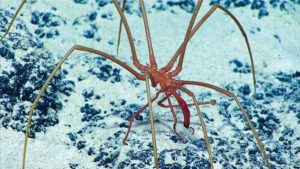
Although not a true spider, it definitely looks like one! Part of the crab family, this creature has long legs in contrast to a small body size. Most have eight legs, although some can have ten. A system called proboscis allows them to suck nutrients from soft-bodied invertebrates. They live in many parts of the world, mostly in shallow waters, but can be found as low as 23,000 feet. They thrive in the cold waters of the Antarctic.
Glass Sponge
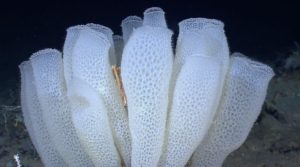
Now talk about a cool-looking creature! These are sponges with fused silica (glass-like) skeletons. Experts believe they are the longest living animals on earth, with a maximum life span of up to 15,000 years.
Glass sponges are found in all oceans of the world, although they are particularly common in Antarctica. They range in size from 4-12 inches. Some species are capable of fusing together to create reefs.
Orca Whale
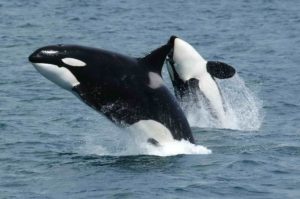
One of the coolest and most fascinating creatures on earth is the Orca whale. Beautiful, intelligent, and ruthless killers (their nickname is the Killer Whale), Orcas are probably the most famous whales in the world. While they don’t live full-time in the waters off Antarctica, they do spend a lot of time there. Their favorite food is seals, but they definitely don’t mind the occasional penguin from time to time. Their high intelligence allows them to coordinate hunting attacks, making them very effective in being able to catch their prey.
The Amazing World of Antarctica’s Tiny Creatures
So now that we’ve learned about some of the large creatures you can find on Antarctica and its surrounding waters, let’s take a microscopic deep-dive to discover some amazing tiny critters that call Antarctica home.
Tardigrade
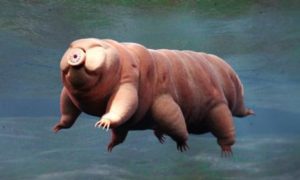
Can you even believe this creature is real? They are really tiny, measuring 1mm in length, and have been found to live in almost every habitat on earth, including Antarctica. These tiny little creatures are known to survive in extreme temperatures, both cold and hot, and have even been tested to survive in outer space! The reason they are so tough is that they have a unique protein in their bodies called Dsup—short for “damage suppressor”—that protects their DNA.
Antarctic Krill
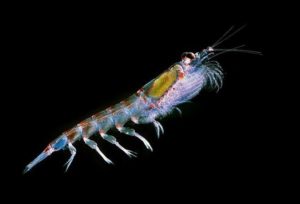
The Antarctic Krill’s tiny size belies its importance in the global food chain – they are the most common food for almost every sea creature that exists. From small fish to giant whales, krill are the basic nutrients consumed that drive the cycle of life in the world’s oceans. Even though the individual krill is tiny, it is estimated that their collective biomass – the total weight of all the krill in the world – is more than any other species in the world!
Antarctic Midge
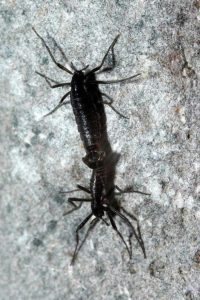
This wingless creepy crawler is only 6mm in length, but it’s considered the largest land creature that lives full-time in Antarctica. It’s also the only insect that lives on Antarctica. They’re able to survive the frigid cold temperatures by literally freezing themselves! To prevent damaging their internal tissue, they lose close to 70% of their body fluids. Once they are frozen, they spend about six months in a state known as “diapause,” where they don’t move, eat, or do anything at all.
Which Antarctic creature is your favorite? Would you ever want to live in such crazy cold conditions? Let us know the next time you come in for a dental check-up!















